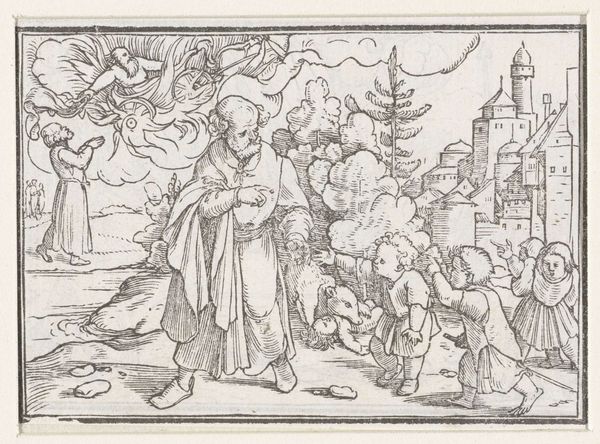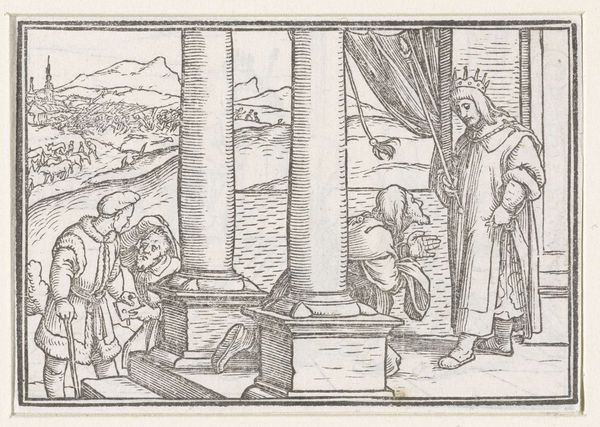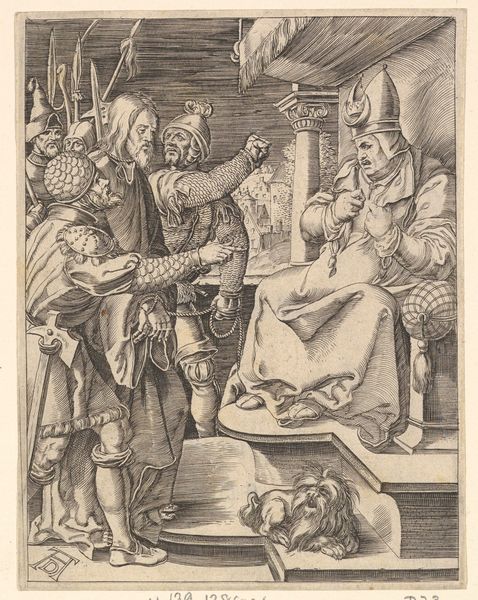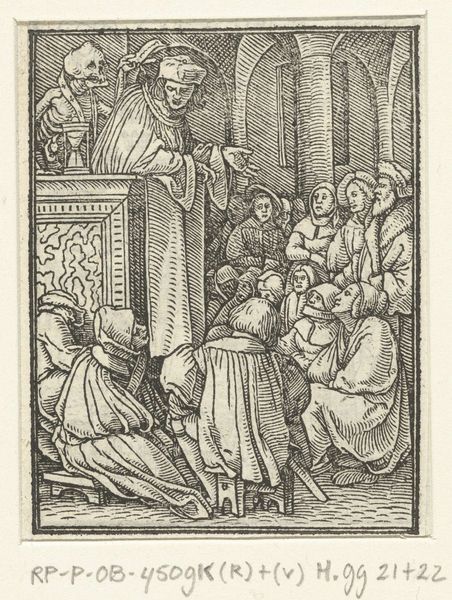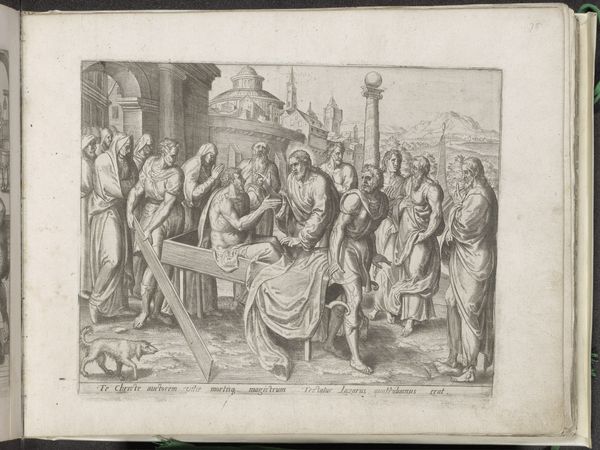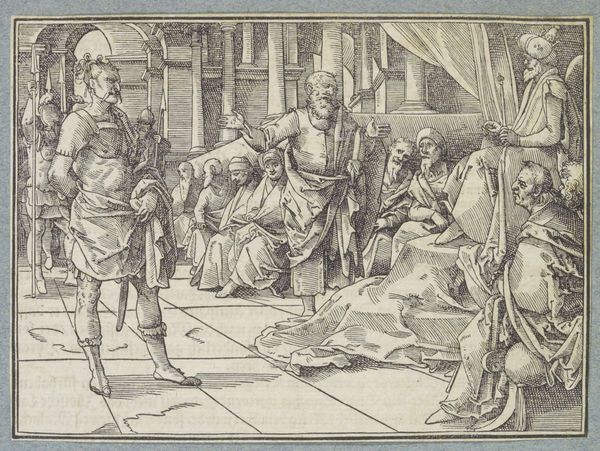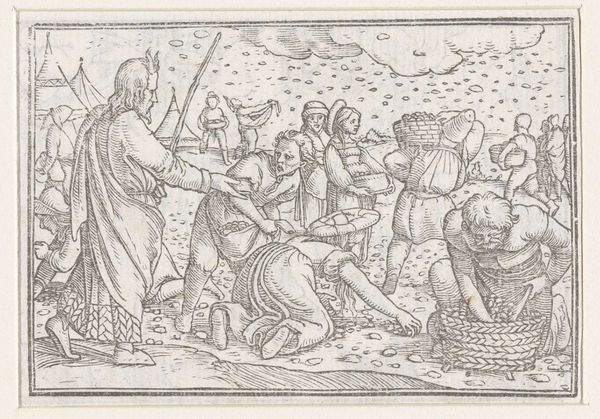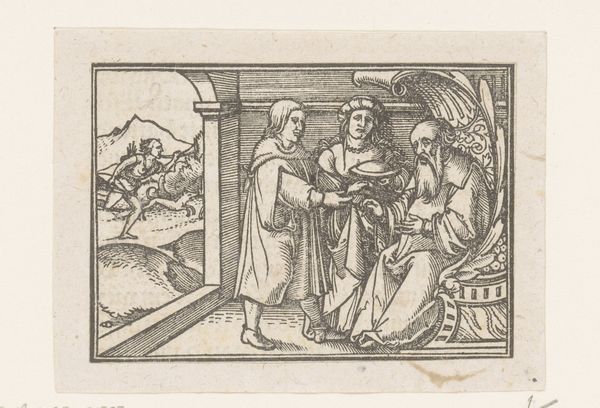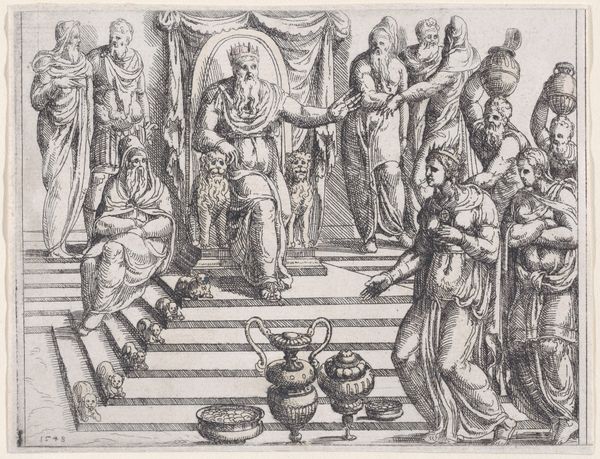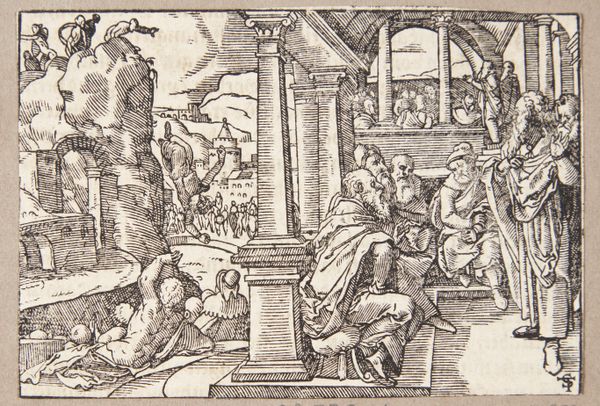
drawing, ink, engraving
#
drawing
#
narrative-art
#
pen illustration
#
figuration
#
ink line art
#
ink
#
history-painting
#
northern-renaissance
#
engraving
Dimensions: height 60 mm, width 85 mm, height 72 mm, width 97 mm
Copyright: Rijks Museum: Open Domain
Curator: This engaging print, housed here at the Rijksmuseum, is entitled "Moses and Aaron in Discussion with Pharaoh about Israelites". It’s an ink engraving executed around 1538 by Hans Holbein the Younger. Editor: The initial impression is one of rigid formality, wouldn’t you say? A frieze-like composition rigidly organized, all harsh angles, emphasizing the figures and architectural elements... the black ink work providing sharp contrast against the stark paper background. Curator: Indeed. Observe the symbolism embedded in this image. We see Pharaoh elevated, literally, enthroned, suggesting earthly power, whilst Moses and Aaron, stand humbly. And on the left side we can make out the Isrealites under a whiplash who work and are building something. Their shack visible in the distant plains. Do you perceive an intended meaning by this layout? Editor: Definitely. Holbein constructs a stark binary: power versus oppression, the individual ruler versus the collective laborer, using position, framing, and light to drive this symbolic opposition home. Look at the parallel, almost decorative lines creating texture and dimension. Holbein masterfully used lines to portray tension as much as texture! Curator: You raise an interesting point! Considering Holbein’s Reformation context, Pharaoh, the oppressor, carries connotations. The figure of the tyrant—a symbol of unjust authority as well as perhaps even the established religious orders, contrasted against figures advocating a new covenant. Editor: I find Holbein's graphic style particularly effective here. Each line contributes to the narrative. The strategic light and dark spaces guide your eye through the drama— it heightens the psychological tension between the figures and the events at hand. Curator: Precisely, and the composition further solidifies Holbein's thematic intent. As an engraving it allowed for accessible widespread distribution, conveying its visual messages and its allegories with clarity, during a period of major political and religious shift in Europe. Editor: It strikes me now as more than just a depiction of a biblical story but a meticulously designed argument. Holbein leveraged his formidable skill with form and symbol to construct a timeless vision of power dynamics and resistance. A lesson vividly communicated, indeed. Curator: A convergence of artistic skill, political messaging and religious undertones! Thank you for helping me see that today. Editor: The pleasure was all mine! It shows the importance of recognizing cultural heritage as well as structural intent.
Comments
No comments
Be the first to comment and join the conversation on the ultimate creative platform.

